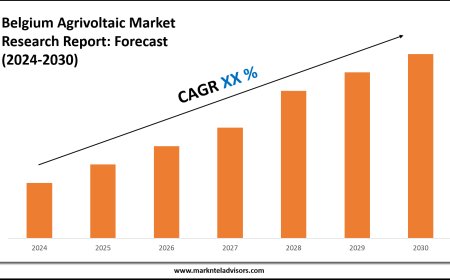Financial Workflows Accelerate When PDFs Are Editable

Main Points
-
Static PDFs slow financial workflows.
-
Manual entry raises error risks.
-
Version control aids compliance.
-
Collaboration improves with editable files.
-
Reduces print-sign-scan reliance.
-
PDF to Word boosts editing flexibility.
-
Edit trails ensure audit compliance.
In finance, paperwork is paramount. From invoices and tax returns to audit trails and financial statements, every transaction builds on the right kind of paper that can be read and verifiable. These papers help in ongoing business activities and also prove vital in the process of decision-making, compliance, and reporting.
But still, the majority of finance teams work on static PDFs - not easy to edit, not easy to pull information from, and not easy to refresh without starting all over. Thus, creating bottleneck - finance work flows, causing undesirable delay as even small changes require time-consuming workarounds like printing/rescanning/manually entering data. Thus, delays, version control problems, and expensive mistakes become the norm.
In today's fast-paced financial environment, editable PDFs have transcended the realm of convenience and entered that of necessity. Direct editing capability enables finance teams to streamline processes, collaborate, and accelerate documentation without compromising on safety or accuracy.
The Cost of Non-Editable PDFs in Financial Operations

Static non-editable PDFs may look innocuous on the surface, but in financial operations, they bring with them delays, mistakes, and risks that are proportional to business complexity. When documents are non-editable, even small changes or corrections are now manual steps, making the financial workflows slow and not repeatable.
Delays in Document Approvals, Reporting, and Auditing
In finance operations, timeliness and accuracy are crucial, especially concerning monthly closings, budget approvals, and audit documentation. Static PDFs obstruct these procedures as they prevent users from making inline alterations or remarks. Any necessary change typically entails several unnecessary steps: print, sign, scan, and resend. When this cycle occurs throughout hundreds of documents, cumulative delays become consequential. For deadline-driven teams, particularly within audit cycles, these inefficiencies add to stress, risk, and overtime.
Manual Data Extraction and Re-Entry Resulting in Errors
Financial staff are often presented with critical reports and statements in PDFs that are not designed to easily extract data. When the PDFs can't be edited, staff must manually enter numbers into spreadsheets or accounting systems. The Institute of Finance & Management estimates the manual data entry error rate at 3.6% to 4%, a margin that can skew budgets, misreport earnings, or cause downstream reconciliation problems.
Compliance and Version Control Issues in Regulated Industries
Static PDFs cause headaches when banks have to adhere to rigid regulations. With no edit trail and versions not automatically updating, groups can submit old or non-compliant files. Without an edit history or changelog, showing accountability is challenging. In fields like insurance or asset management, the lack of ability to track modifications can expose companies to penalties during regulatory or internal reviews.
Higher Operational Expenditures Caused by Inefficiencies
When financial reports need to be reworked because of formatting errors, signatures missing, or file types incompatible, working capital is wasted. Workers allocate more time to handling documents than interpreting financial results. Ultimately, on top of this inefficiency lies a huge increase in labor cost, keeping employees away from value-added activities like forecasting or risk analysis.
Ineffective Collaboration Across Departments
Finance does not usually happen in a vacuum - documents go through legal, procurement, compliance, and leadership groups. Static PDFs break up collaboration, particularly where feedback loops are based on email attachments and offline editing. This slows down contract agreements, financial disclosures, or internal approvals. In comparison, editable documents - particularly when converted with tools like iLovePDF edit or seamlessly routed through PDF to Word - facilitate faster collaboration and smoother document transfers.
Editable PDFs Revolutionize Financial Efficiency
Editable PDFs remarkably cut friction within financial documents by allowing instant changes without interrupting the workflow. Their influence touches several phases of financial operations - from low-level transactions to top-level audits.
Smooth Integration into Accounting and Audit Processes
Editable PDFs naturally integrate with digital accounting systems and audit and financial workflows. Editing PDFs allows finance teams to work within economic documents, like updating ledger transactions, to annotating bank reconciliations, to incorporating audit samples, while not repeating the whole exercise by recreating or converting files again and again. Likewise, it guarantees auditors readable, complete, and well-formatted documents, minimizing review cycles and queries back and forth.
Faster Turnaround for Contract Approvals and Financial Reports.
Finance teams usually handled these time deadlines with much sensitivity attached to documents such as client contracts, supplier agreements, and budget reports. These documents would then be edited into an editable PDF, and everything- signatures, approvals, and a send back- would be done much faster than through conventional formats.
Cutting Down Manual Errors and Replication
Editable PDFs can reduce the risk of duplicate manual data input. Rather than copying data into new forms or redoing routine forms, users can directly update existing documents. This is especially beneficial for routine tasks like monthly budgets or tax returns, where the same format is used, and only updated numbers are needed.
Improving Recordkeeping and Version Control
Version control is essential in finance, where small errors can lead to compliance issues. Editable PDFs, particularly when used with file tracking tools, enable good document histories. Every change is made to the same base file, which has fewer duplicated versions and an easy-to-follow audit trail.
Enhancing Accessibility and Format Consistency
Editable PDFs facilitate team consistency in formatting, text fields, and layouts for financial documents. Not only does this uphold professional and brand standards, but it also guarantees consistency when reporting with other tools. Multi-user editable, standardized templates put an end to the confusion of incompatible formats and lost fields.
Tools That Make PDF Editing Easy and Secure
In finance processes, accuracy in handling documents and speed are essential. Fortunately, several tools have since been created to assist finance professionals in editing PDF files without the fuss. The apps feature intuitive interfaces to facilitate quick modifications, such as updating figures, correcting text, or making annotations, all within a secure virtual atmosphere.
Minimizing Print-Sign-Scan Cycles Dependence
Traditional finance operations tend to heavily depend on physical documents - printing out documents for signing, scanning them back into electronic form, and physically storing or forwarding files. Editable PDF tools greatly diminish this reliance through electronic changes and approvals in the same electronic document. This change not only speeds up processes but also lowers operational costs, cuts down on paper consumption, and lessens the chances of documents being lost or misplaced.
Seamless Cooperation Among Finance Departments
Editable PDFs facilitate immediate collaboration by allowing various stakeholders, such as accountants, auditors, and managers, to review and offer comments on documents without altering the original file. This feature provides transparency and faster consensus in making financial decisions.
Integration with Current Financial Systems
Most PDF editing applications are implemented to work efficiently with accounting software, document management systems, and cloud storage services. This makes it easy to flow edited documents into existing financial processes, which ensures consistency and traceability.
Ensuring Compliance and Audit Readiness
PDF editing tools usually have features such as audit trails, version history, and permission controls, which are critical to financial regulation compliance. These attributes assist organizations in keeping accurate documentation of document modifications and holding people accountable.
Utilizing PDF to Word for More Efficient Financial Collaboration

Flexibility matters in financial workflows. PDF documents are the default in sending completed documents, but their inert nature tends to restrict immediate editing and collaboration. It's just that place where the complete transition of PDF to Word format shines. Making editable documents from PDF for finance experts could let one change, add comments, or even revise an intricate data model without resulting in a place besides whole document layout.
Reintegration into PDF for Final Submission or Archiving
After the revisions are done in Word, saving the document back as a PDF guarantees consistency and security for the final submission or archiving. PDFs preserve the formatting integrity and lock out further unapproved changes, which is needed for compliance and record-keeping in finance.
Improving Version Control and Audit Trails
Having a clean version control is essential for financial records. Editable Word documents enable comprehensive tracking of changes via "Track Changes" and comments, enabling transparency throughout collaborative review. Converted back to PDF, these can be locked in place, leaving a clean, final copy. This process accommodates audit requirements through evidence of clear documentation of revisions and approvals.
Decreasing Manual Data Entry and Errors
Manual re-typing of information from PDFs frequently results in transcription errors that can have severe monetary impacts. With the use of PDF to Word conversion, information can be easily edited and checked in an editable format. It saves rework and avoids errors, which makes financial reports and analyses more accurate.
Security and Compliance While Editing Financial PDFs
Thus, in financial business, utmost security and compliance must remain key regardless of the kind of editable PDFs that may arise. It is pertinent that documents remain non-modifiable, traceable, and confidential to be compliant with regulatory expectations and protect sensitive information throughout the documents' life cycle.
Ensuring Edit Trails for Audits and Compliance Checks
Perhaps the most significant feature of editable financial documents is preserving an audit trail. All edits to a PDF should be traced with metadata that specifies who edited it, when they edited it, and what changes were made; transparency is critical to compliance audits and internal controls because it enables organizations to prove accountability and turn away from improper changes threatening the integrity of financial reports.
Permission Controls and Encryption within Editing Tools
There should be robust permission controls to restrict access and editing rights to just approved staff members. Editing tools for financial PDFs must offer a wood-permission setting to accommodate very specific access, view-only, comment, or full-edit rights critical to secure sensitive information. Encryption protects the document in transit as well as at rest from interception or unauthorized viewing.
Ensuring Data Integrity Across the Edit Cycle
Editable financial PDFs need to maintain the integrity of data at all times regarding accuracy and completeness. The implication is that while edits are allowed, the original structure of data, formulas, and key fields needs to be shielded from corruption or irreversible erasure. Validation processes, including digital signatures or checksum verification, add to data integrity by verifying that files do not change once they have been finally approved or submitted.
The Final Thoughts
Editable PDFs have become a key driver of speed, precision, and teamwork in financial processes. An editable PDF accommodates such solutions to old pain areas as long-term delays from non-dynamic layouts, re-keying data, and versioning problems, thus allowing finance teams to move at pace with uncompromised compliance and security standards.
With financial transactions becoming more digital and time-sensitive, it is no longer a luxury but a necessity to have live capabilities around editing, reviewing, and completing documents to maintain operational excellence.




































